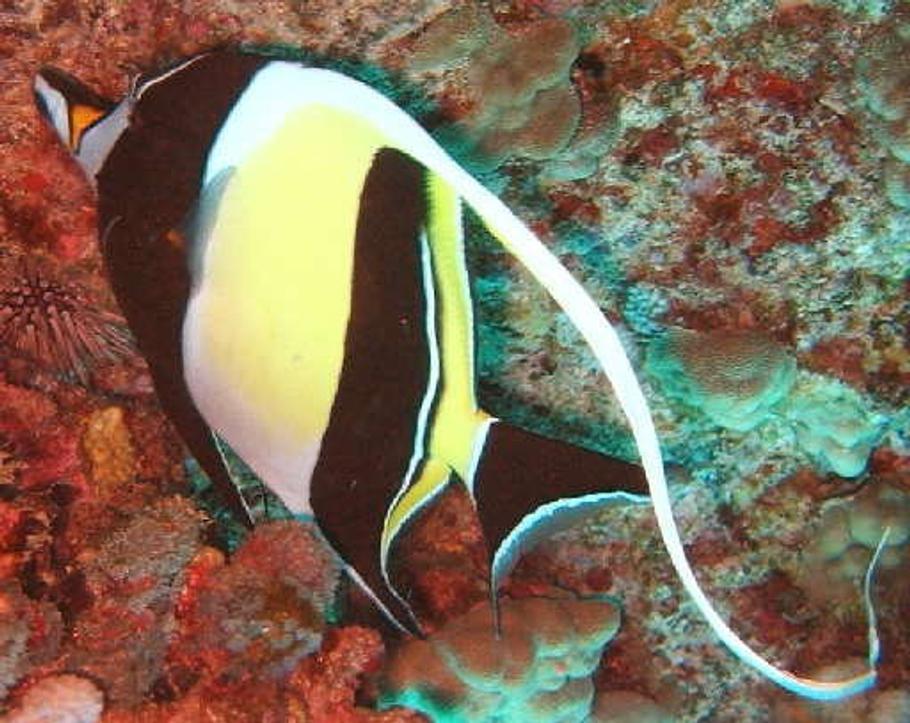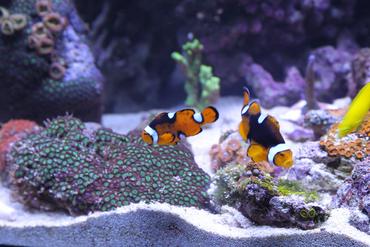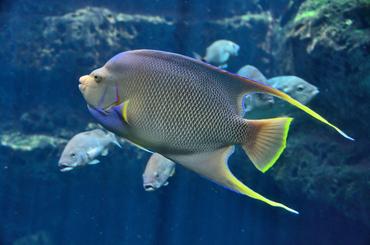LIVE FOODS FOR MARINE FISH

Updated
Feeding your fish a proper diet is the key to keeping them healthy. Many saltwater fish require live foods as part of a staple diet.
Feeding your aquarium fish a balanced diet is the key to keeping them healthy. If your fish do not receive all the nutrients their bodies need, they will fail to thrive. Many aquarium hobbyists do not realize that a healthy diet for saltwater aquarium fish requires more than simply purchasing a container of commercial flake food from the pet store. While many freshwater aquarium fish can thrive on a staple diet of flake food, many species of saltwater aquarium fish require live foods as part of their daily diet. This is an especially important part of the diet for wild-caught specimens of saltwater species, but all saltwater fish may benefit from the addition of live foods to their diet.
Brine Shrimp
Brine shrimp are one of the most common types of live food offered to aquarium fish and they are also one of the easiest to obtain. You may be able to purchase live brine shrimp but culturing your own from dried eggs is fairly simple. In most cases, all you need to raise your own brine shrimp is a clear glass or plastic container, an air stone and, of course, the brine shrimp eggs. You should be able to find dried brine shrimp eggs online or at your local pet store and the directions for hatching them should be on the package. As long as you follow the instructions properly, brine shrimp eggs generally hatch within 24 to 48 hours. When they are first born, brine shrimp are very small which makes them an excellent food source for juvenile fish and fry – as the brine shrimp go, they will be able to satisfy larger specimens.
Feeder Fish
Live feeder fish are an important part of the diet for carnivorous species of fish but they should not be the only source of nutrients for these species. Feeder fish like mollies, guppies and goldfish are popular choices and they are a great source of protein – you should be aware, however, that they do not contain some of the essential nutrients (like fatty acids) that marine fish require to be healthy. Another thing you should be aware of fish feeder fish is that there is a high risk for contamination. In pet stores, feeder fish are often kept in overcrowded tanks where stress levels are high and there is an increased risk for disease transmission. If you purchase contaminated feeder fish, there is a good chance that the disease will be spread to the fish in your tank. Be careful when purchasing feeder fish to be sure that they are healthy first – you may even want to quarantine them for a while before offering them to your fish.
Copepods
The word “copepod” refers to a group of small aquatic crustaceans that can be found in nearly all aquatic environments. Different species of copepods inhabit different habitats – planktonic copepods drift throughout the ocean while benthic copepods inhabit the ocean floor. Incorporating a variety of copepods into your feeding regimen is important because different species of fish will feed on different types of copepods, depending which level of the tank they tend to inhabit. Benthic copepods are an important food source for seahorses and wrasses while pelagic copepods, those dwelling in the water column, are ideal for many species of coral.
Like brine shrimp, copepods are fairly easy to culture at home – all you need is a clear plastic container, an air stone and a mixture of clean saltwater to fill the container. Once you have the container set up, all you have to do is add the copepods themselves along with a food source and you are ready to go. If you plan to keep a constant culture of copepods going, you should wait to harvest them until the population reaches a density of at least 1/mL. To harvest your copepods you may simply scoop them out in a cup and pour them directly into your tank or you can use a fine mesh net to collect them. The type of copepods you culture will determine the type of food you need to feed them, so be prepared to do a little research in order to choose not only what type of copepod you want to culture but what kind of supplies you will need to maintain the colony.
Other Foods
There are many types of live food you might offer your saltwater aquarium fish and those discussed above are just a sample of the options available. Other options include live mussels or mollusks, large crustaceans like crayfish or fiddler crabs, even worms. In order to create a healthy live food diet for your saltwater aquarium fish it is important that you do some research to determine then nutritional needs of the species you have in your tank. You should also familiarize yourself with the natural diet of those species so you can replicate it as closely as possible in your tank.
Cultivating a thriving saltwater tank starts with feeding your fish a healthy, balanced diet. Aquarium fish are like humans in that they may get bored with eating the same thing every day – try to vary the diet for your fish by offering them a variety of different live foods as a supplement to their staple diet. Live foods are also a great way to encourage fussy species to eat and they are also incredibly important in raising fry. If you plan to breed your aquarium fish, or if you simply want to give them the best care you possibly can, you would do well to learn the basics about live foods for saltwater aquarium fish.































































































